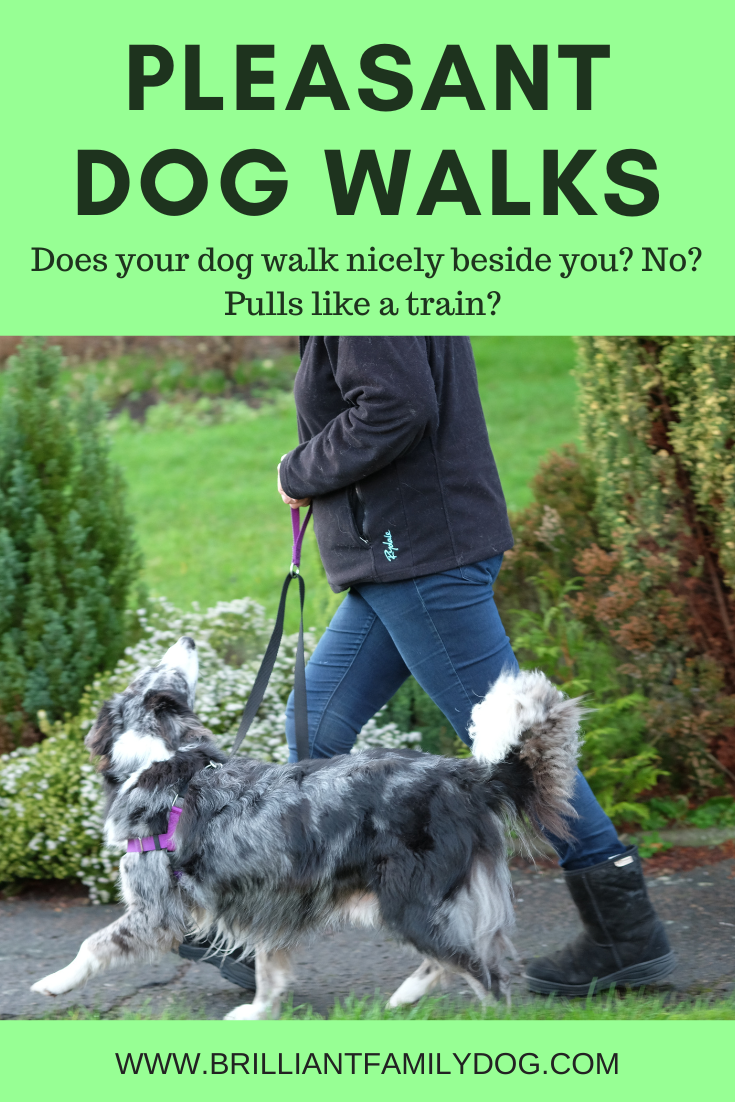As I wrote in my post “How do I stop my dog doing xyz?” back in July, this is a very common question I get.
And as I wrote … back in July (and many other times!) to have your dog STOP doing one thing, you have to teach him how to START another.
But so many methods of teaching your dog to walk nicely on lead are punishment-based. They don’t involve any teaching at all - just yank, stop, and turn. How can anyone enjoy a walk like that?
This is why people write to me. They’ve tried these daft suggestions - trying to STOP their dog - and have had zero success.
They tend to blame the dog (he’s “stubborn”, “stupid”, and all the rest) and never pause to see that they have to do something themselves to change this unhappy state of affairs!
Let’s Go!
So today I want to give you some of the first chapter of Let’s Go! Enjoy Companionable Walks with your Brilliant Family Dog, Book 3 in the series Essential Skills for your Brilliant Family Dog
“You’re ready for your daily walk. You are full of hope because you know today is going to be the day your dog walks nicely beside you without pulling your arm out of its socket. You are deluded. Yep, it’s going to be just the same as usual.
Lead on = Carthorse mode.
She nearly pulls you over as you step over the threshold. She strains away from you while you try to lock the door. You reach the roadside, and it’s head down, PULL! She’s choking and spluttering, she’s scrab- bling along the pavement. She’s lurching and weaving - this is no fun for either of you!
I know you’ve tried lots of gadgets and methods to try to make things better - things suggested by people in the park, by friends, family members, and even trainers - some against your better judgment. But why aren’t any of them working? You’ve got collars and leads to beat the band - some of them designed to inflict pain or make holes in your dog’s neck. These devices are sold to prevent pulling, but they just seem to encourage her to pull harder.
I’m guessing that you have been trying to teach your dog not to pull. This is sadly doomed to failure. If there’s one thing dogs don’t under- stand, it’s not doing something.
Dogs are doers. They do things. They can’t not do something. It makes no sense to them. What we have to do is show them something else to do instead of pulling.
Many people - and probably you too - have successfully taught their dog not to jump up for a treat by simply hanging on to the morsel until the dog is sitting. She can’t jump and sit at the same time, so the jumping dies out.
We can use the exact same system for teaching your dog to walk nicely beside you on a loose lead. Like sitting when a treat is on offer, keeping the lead loose becomes the default behaviour for your dog when she’s walking with you. She can’t pull ahead and be by your leg at the same time, so the pulling dies out.
Really, yes! It will work for you too!
I’ve taught this system to hundreds of puppies and dogs, and I’m always amazed at how quickly the dog gets it - once the owner gets it!
You don’t need any funny gadgets or kit - though I do have help for extreme kamikaze pullers - and there is no force, coercion, or intimi- dation involved. You’re not telling your dog, “You’ll do this because I say so.” You’re saying, “You do this because you like doing it!”
You got a dog to be your companion, not to fight with. You wanted to enjoy the great outdoors. You wanted a reason to get out every day to meet people, to visit new places, to get fit, and maybe shift a few pounds.
None of this is going to happen if your walks are a tussle and a misery!”
Go and check this book out - you can read a sample here, or listen to the audiobook here.
But you need to do SOMETHING!
Expecting your dog to change, miraculously, by having the neck pulled off him is never going to work!
Enjoy your walks together, in comfort and harmony.
Yes - even your dog can do this … just try it, as these people did, and see for yourself:
“Lexie is responding to the lead work beautifully - still early days but it's wonderful to walk her without making one arm longer than the other! All I needed was training - once I started doing it right she caught on no problems - thankyou.” LCS and her Cocker-poo
“Dodger is doing really well with his loose lead walking. I am so proud of him, I can't thank you enough for your help and support.” AD and her Staffy
“Lois pulled like a train on the lead, very strong for a little’un - now she has impeccable manners and walks like a dream. Has become the envy of our neighbourhood!” CR and her Mini Schnauzer
“Hi Beverley, I just wanted to tell you that your method of loose lead walking is brilliant! I have struggled for a year and a half with Molly lead walking and finally a method which works!!!!” KS and her Spaniel





